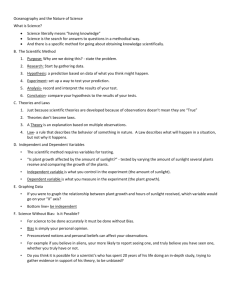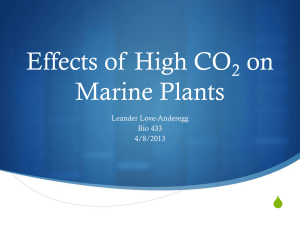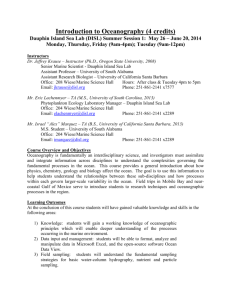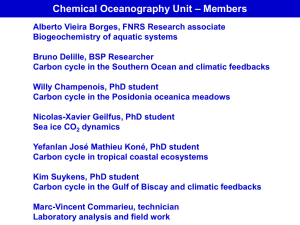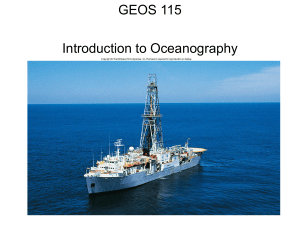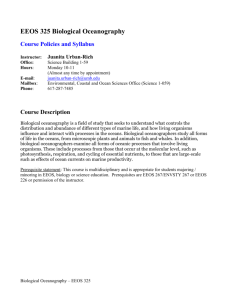Final_Study_Guide
advertisement
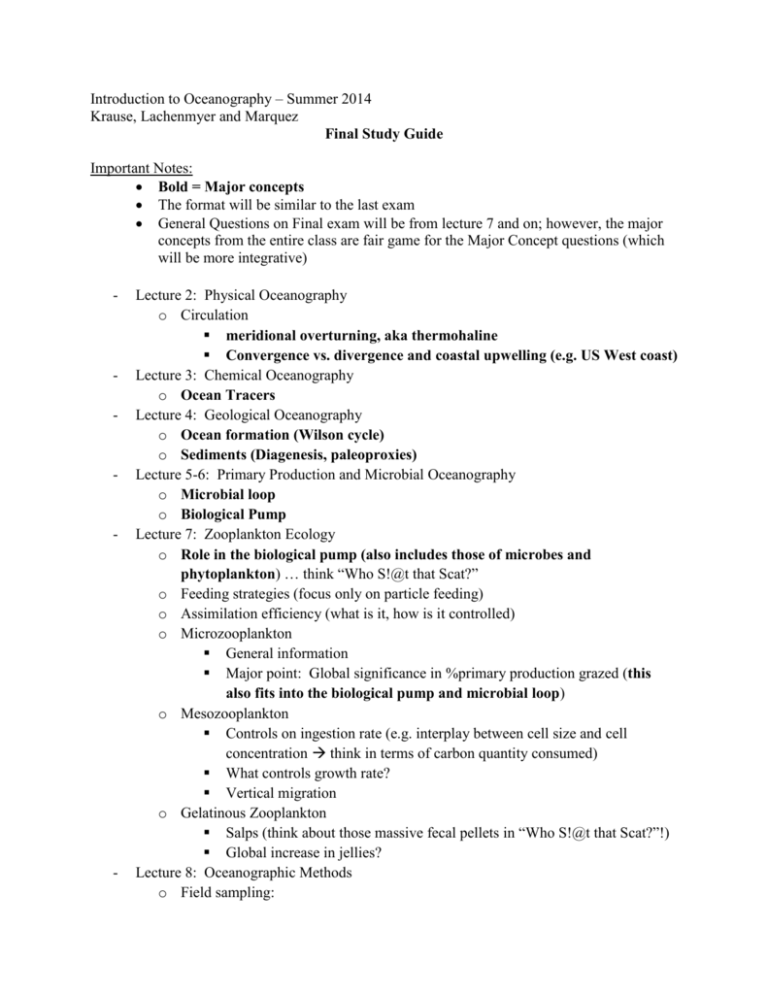
Introduction to Oceanography – Summer 2014 Krause, Lachenmyer and Marquez Final Study Guide Important Notes: Bold = Major concepts The format will be similar to the last exam General Questions on Final exam will be from lecture 7 and on; however, the major concepts from the entire class are fair game for the Major Concept questions (which will be more integrative) - - - - - Lecture 2: Physical Oceanography o Circulation meridional overturning, aka thermohaline Convergence vs. divergence and coastal upwelling (e.g. US West coast) Lecture 3: Chemical Oceanography o Ocean Tracers Lecture 4: Geological Oceanography o Ocean formation (Wilson cycle) o Sediments (Diagenesis, paleoproxies) Lecture 5-6: Primary Production and Microbial Oceanography o Microbial loop o Biological Pump Lecture 7: Zooplankton Ecology o Role in the biological pump (also includes those of microbes and phytoplankton) … think “Who S!@t that Scat?” o Feeding strategies (focus only on particle feeding) o Assimilation efficiency (what is it, how is it controlled) o Microzooplankton General information Major point: Global significance in %primary production grazed (this also fits into the biological pump and microbial loop) o Mesozooplankton Controls on ingestion rate (e.g. interplay between cell size and cell concentration think in terms of carbon quantity consumed) What controls growth rate? Vertical migration o Gelatinous Zooplankton Salps (think about those massive fecal pellets in “Who S!@t that Scat?”!) Global increase in jellies? Lecture 8: Oceanographic Methods o Field sampling: - - Niskin (what can we get from this?) Towed nets (what can we get from these?) Towed instruments Shipboard underway seawater system Physically sampling water Flowing water through sensors Shipboard ADCP (acoustic Doppler current profiler) Core types Autonomous sampling Remote sensing Satellite types, measurements o Modeling: Basic NPZ o Methods: 14C or isotope tracer basics Dilution method (simultaneous measure of microzooplankton grazing and phytoplankton growth) Lecture 9: Fisheries Oceanography o Law of the Sea Treaty (what does this establish?) o EEZs o Linking oceanography & fisheries Case study: Bering Sea Oscillating Control Hypothesis (this integrates sea ice, phytoplankton bloom timing, zooplankton and fish) o Maximum sustained yield o Goal of Ecosystem Based Management o Aquaculture Which country dominates? Positive/negative issues o Fishing down the food web (includes basics from discussion) Lecture 10: Ocean Acidification (and its components bolded below) o The CO2 imbalance (not all anthropogenic CO2 in atmosphere, where does it go?) o Fate of CO2 in seawater o Tracing anthropogenic CO2 in the ocean (where are highest levels found?) o pH in different marine systems why do seemingly little changes cause worry? o Changes in the aragonite saturation with decreasing pH Biological effects o Biological responses to increasing CO2 - - - Focus on response types (i.e. graphs in slide 30) Lecture 11: Hypoxia o Hypoxia vs. Anoxia o Global importance o Major components of hypoxia Nutrient inputs Physical processes Organic carbon Oxygen consumption o Mississippi Dead Zone o Black Sea o Hypoxia prevention Lecture 12: Ocean-Climate o Natural Climate Change o Quaternary Climate Change o Factors affecting the ocean-atmosphere CO2 balance on geological time o Glacial Iron Hypothesis Anderson et al. 2002 Southern Ocean Scenarios o El Nino/La Nina o North Atlantic Oscillation o Sea level rise Lecture 13: Ocean Geoengineering o Wave use Raw energy extraction “sock” pumps o CO2 Removal/capture Iron fertilization (couples to Glacial Iron Hypothesis) CO2 injection o Increase albedo Marine cloud brightening o Ocean City infrastructure (e.g. Equatorial Pacific)

